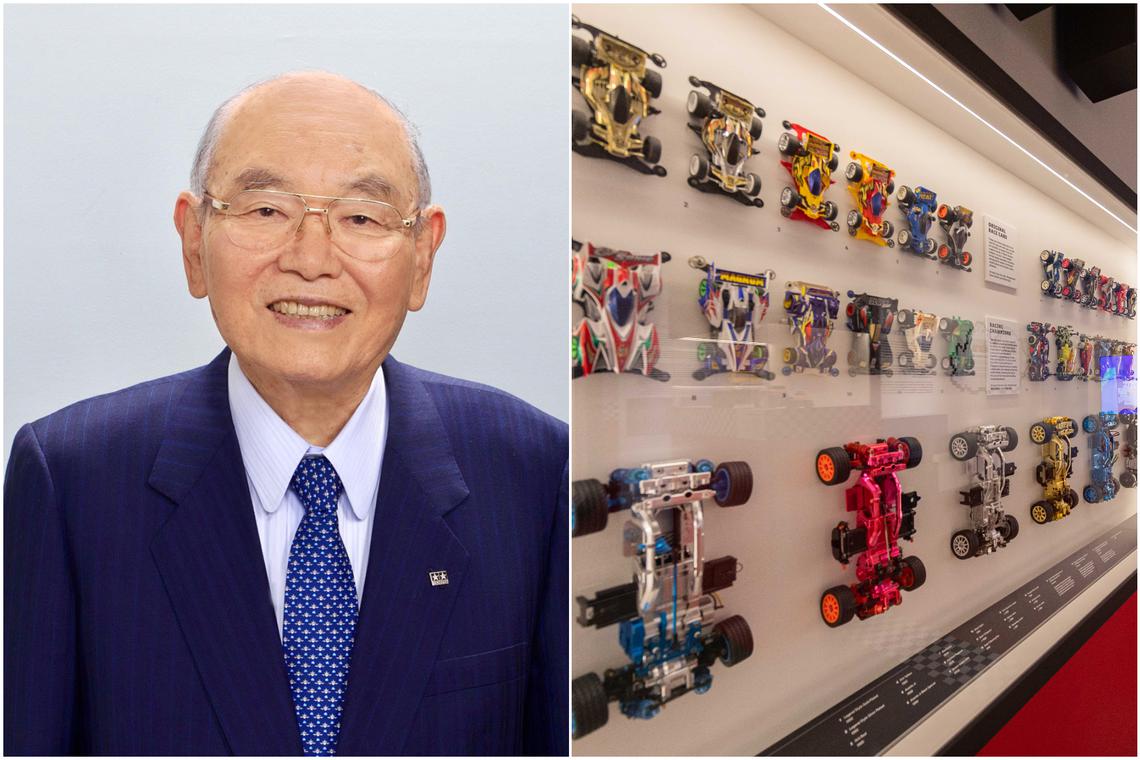
Shunsaku Tamiya, who brought perfection to plastic race car models, dies at 90
TOKYO – Mr Shunsaku Tamiya transformed his father’s former sawmill into a leading manufacturer of plastic model kits, with a passion for detail that once led him to buy and disassemble a Porsche to make a perfect miniature version. He died July 18 of undisclosed causes at age 90.
For more than four decades, Mr Tamiya led the company that bore his family’s name, turning it into one of the world’s largest makers of build-it-yourself plastic model kits of race cars and military vehicles. Since producing its first such kit in 1960, of the Japanese World War II battleship Yamato, Tamiya Inc has become a globally known brand that also produces remote-controlled cars.
Under the leadership of Mr Tamiya, who replaced his father as the company’s president, Tamiya Inc won popularity worldwide for making kits that excelled in quality and historical detail. In 1967, one of its miniature models so faithfully reproduced a Formula One racing car, down to the location of a starter battery beneath the driver’s seat, that the maker of the original vehicle, Honda Motor, wondered if he had access to trade secrets but decided to let it pass.
His pursuit of accuracy also once took him to the embassy of the Soviet Union in Tokyo, where he sought details about Warsaw Pact tanks. This drew the attention of Japan’s public security bureau, which placed him under surveillance for a time.
Mr Tamiya was serving as the company’s chair at the time of his death. According to the company, he still enjoyed standing at the entrance to an annual trade show near Tamiya’s headquarters in Shizuoka, a city south of Tokyo, to watch the children come in.
“He turned our city of Shizuoka into a world center of plastic models,” Mayor Takashi Namba told reporters after learning of Mr Tamiya’s death. “He also built a global brand. I truly respected him.”
Although the company continues to produce model kits in Shizuoka, it also opened a factory in the Philippines in 1994.
Born in Shizuoka on Dec 19, 1934, Mr Tamiya’s lifelong passion for military vehicles began as a child during World War II, when he spotted a US B-29 bomber passing high overhead.
“It was the first time I had ever seen an enemy plane, a shining object at the end of a long white contrail in the cloudless blue sky, but I was fascinated by its leisurely flight in the stratosphere,” he told the Shizuoka Shimbun, his home city’s newspaper, in 2001. “It was a spine-chilling sight, but for a boy who loves models, it was also an exciting sight.”
After the war, his father, Yoshio, founded a sawmill and lumberyard called Tamiya Shoji & Co. When Mr Shunsaku Tamiya joined after college in 1958, the family business was making simple wooden kits for building cars.
With his father, Mr Tamiya led the company into the production of plastic models, then still a relatively new product. He visited the United States for the first time in 1966, when he struggled to sell kits. He was eventually able to “overthrow America” in the kit business by offering superior quality.
“We showed we were serious about making good products,” he said in a 2003 interview with the Shizuoka Shimbun.
The company, which was renamed Tamiya in 1984, also won customers because of the meticulous accuracy of its kits. Mr Tamiya visited military museums around the world to research archives and take pictures of tanks, warships and aircraft. At locations where photography wasn’t allowed, he memorised the details, recording them in a notebook afterward.
During the Cold War, he got his first up-close look at Soviet tanks at a museum in Israel, which had captured them from Arab countries during the Six-Day War.
His company also built model kits of racing cars as well as radio-controlled cars. To make a miniature replica of a Porsche 911 that was perfect down to the shape and placement of the engine, he bought one of the expensive German sports cars.
He did this “not to drive it, but to use it as a reference,” Mr Tamiya wrote in a memoir. “I brought the 911 into my garage and disassembled everything that could be disassembled.”
He kept Tamiya Inc a family-owned business after taking over as president in 1984, four years before his father died. In 2008, he made himself chairman when his son-in-law took over as president. After the son-in-law died of an unspecified illness at the age of 59 in 2017, Mr Tamiya returned to serve as president and chairman.
Last year, he named Mr Nobuhiro Tamiya, the husband of a granddaughter, to replace him as president, with the elder Tamiya once again staying on as chairman.
The company did not release details of other surviving family members. NYTIMES
Read full article on The Straits Times - Business
Other
Comments
Leave a comment in Nestia App